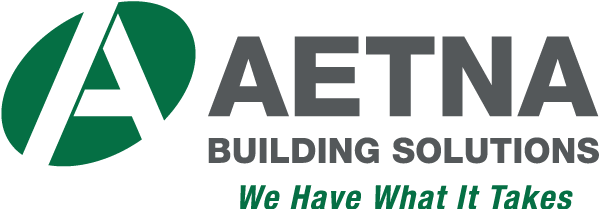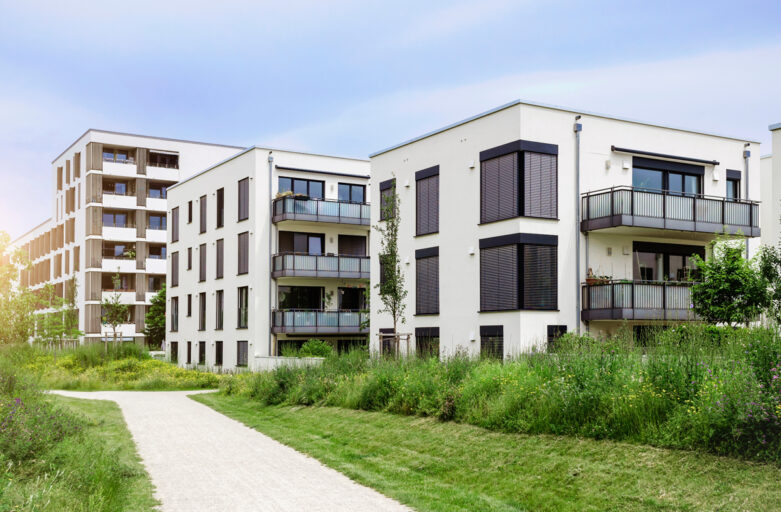Exploring the Rise of Multifamily Housing: Design, Demand, and Durable Materials
Written by Amanda Murphy, Marketing Manager
Published August 2025
As housing demands shift across both urban and suburban areas, multifamily housing has emerged as the most dynamic and in-demand category of residential development. But what exactly is multifamily housing—and why is it seeing record interest among developers, designers, and real estate investors?
What Is Multifamily Housing?
Multifamily housing refers to residential buildings designed to accommodate more than one household within a single structure or development. Unlike traditional single-family homes, these properties offer multiple independent units—each with private living spaces—under one roof.
Modern multifamily architecture spans several building types, including:
- High-rise buildings (12+ stories): Common in dense urban areas, often housing hundreds of residents.
- Mid-rise buildings (5–12 floors): Popular in both urban and suburban neighborhoods.
- Garden-style apartments and townhomes: Low-rise (typically 1–4 stories), ideal for spread-out suburban communities.
Today’s multifamily design is driven by factors such as space optimization, lifestyle-centric amenities, sustainability, and the growing need for remote work-ready interiors.
Multifamily Market Outlook for 2025
The multifamily housing sector continues to outperform others—becoming the top real estate investment class going into 2025. According to the CBRE U.S. Real Estate Market Outlook 2025, investor confidence remains high due to the strong demand for rental housing and rising challenges in housing affordability.
CBRE’s data shows that as of Q3 2024, average mortgage payments were 35% higher than apartment rents—a gap expected to persist into 2025. This affordability imbalance reinforces the demand for affordable multifamily housing, especially among younger renters and first-time buyers.
In addition, multifamily rents are projected to increase 3.1% annually through 2029—outpacing home price growth and pre-pandemic averages.¹
¹ Source: CBRE U.S. Real Estate Market Outlook 2025
Key Multifamily Design Trends for 2025
- Smart & Efficient Floor Plans
Renters increasingly seek well-designed, compact living spaces that offer functionality without sacrificing comfort. From studios to two-bedroom units, multifamily trends in 2025 emphasize flexible layouts, built-in storage, and ample natural light.
- Community-Centered Amenities
Shared amenities are no longer optional—they’re essential. Top offerings include:
- Rooftop terraces and community gardens
- Co-working spaces and soundproof pods
- Pools, fitness centers, and bike storage
- Pet amenities and delivery lockers
These features boost resident retention and create a sense of connection.
- Remote Work-Ready Living
With hybrid work here to stay, developers are integrating tech-enabled workspaces directly into unit layouts and community areas. Expect fiber internet, smart lighting, and acoustic insulation to become standard in multifamily design.
- Warm, Personal Interiors
This year’s design palettes feature expressive, yet cozy interiors. Think terracotta and mustard tones, reclaimed wood, rattan accents, and tactile materials that bring comfort and character to every unit.
Top Materials for Multifamily Housing Projects
Choosing the right materials is critical for balancing durability, style, and budget. Aetna offers a curated range of solutions ideal for high-traffic residential environments:
- Soft Maple Lumber – Lightweight and easy to machine; great for cabinetry and trim in mid-range units.
- Red & White Oak Plywood – Known for toughness and scratch resistance—perfect for flooring and high-use areas.
- Quartz Countertops – A top choice for kitchen and bath applications due to its durability and sleek finish.
- Solid Surface – Budget-friendly and seamless; Wilsonart® Solid Surface options are ideal for value-driven installs.
- THINSCAPE® – Ultra-thin composite that mimics natural stone with a modern look and minimal maintenance.
- Thermally Fused Laminate (TFL) – Affordable, sustainable, and offered in a wide range of textures and finishes for unit interiors.
Functional Hardware for Everyday Living
- FGV XTreme Ball Bearing Slides: Soft-close and standard options provide smooth drawer operation and extended life.
- Vibo Double Waste Bin Systems: Stylish, built-in waste solutions with soft-close mechanisms and space-saving designs.
As multifamily housing continues to evolve, it’s clear that success hinges on thoughtful design, durable materials, and lifestyle-forward features. Whether it’s a high-rise in the city or a garden-style apartment in the suburbs, the demand for affordable, well-designed multifamily homes shows no signs of slowing.
Aetna is proud to support this momentum by offering innovative materials and solutions tailored to architects, designers, and builders leading the future of multi-residential development. Click below to learn more!

